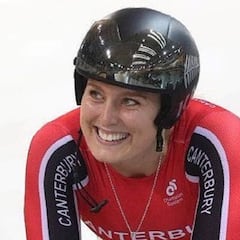What are the disability categories at the 2021 Paralympics?
A big challenge for the Paralympic Games is making sure the competitions are as fair as possible, hence classifying participating athletes.

The Paralympics are the biggest sports competition for athletes with disabilities, and like the Olympics, have Winter and Summer Games.
To guarantee that medals do not always go the athlete with the slightest degree of impairment, participants are classified to decide which ones are eligible to take part in a particular sport. This system helps minimize the effect of the impairment on athletic performance, so that success is determined by their athletic skill and ability.
The process, called “Athlete Evaluation,” groups the athletes according to the degree that their activity is limited due to their impairment. Making sure they are categorized properly in a sport-specific way contributes to the fairness of the Games.
Ten eligible impairment types in the Paralympics
Related sports stories
- Paralympics organizers confirm no fans will be allowed at Tokyo Games
- NZ Cyclist Podmore dies at 24 after citing sport pressure
1. Impaired muscle power- The athlete’s condition reduces or eliminates their ability to move their muscles to be able to generate force. This includes spinal cord injury, muscular dystrophy, post-polio syndrome, and spina bifida.
2. Impaired passive range movement- The athlete’s passive movement in one or more joints is limited. Causes of this include chronic joint immobilization and joint trauma.
3. Limb deficiency- The athlete may have total or partial absence of bones caused by trauma, illness, or congenital limb deficiency.
4. Leg length difference-The athlete’s legs do not have the same length because of limb growth disruption or trauma.
5. Short stature- The athlete has shorter bones in the arms, legs, and/or trunk. This could be caused by achondroplasia, growth hormone dysfunction, among other conditions.
6. Hypertonia- Athletes are less able to stretch muscles due to central nervous system damage. This may be caused by cerebral palsy, traumatic brain injury, or stroke.
7. Ataxia- The athlete has uncoordinated movements due to central nervous system damage. Causes include cerebral palsy, stroke, and multiple sclerosis.
8. Athetosis- The athlete has continual slow involuntary movements. This may be caused by cerebral palsy, traumatic brain injury, or stroke.
9. Vision impairment- The athlete has reduced or no vision caused by damage to the eyes. Possible causes include retinitis pigmentosa and diabetic retinopathy.
10. Intellectual impairment- Athletes have limited intellectual functioning and adaptive behavior. The athlete must have had the impairment before the age of 18.
The Paralympics categorization process
Let's watch the #Tokyo2020 #Paralympics together! 📺
— Paralympic Games (@Paralympics) August 19, 2021
Check out your local @Tokyo2020 Paralympics TV, radio and online broadcasters to follow all the action. Live events will also be available on our Youtube and Facebook, subject to geoblocking restrictions.
If the athlete is judged to have an eligible impairment, the next phase is deciding if they meet the Minimum Impairment Criteria for a specific sport. These criteria may vary from sport to sport.
The third step is establishing the athlete’s sports class. The classification panel will assess which of the 50 or so sports classes the athlete will compete in. With the Sports Class system, athletes are grouped together according to their similarities in activity limitation.
Related stories
After athletes pass all the phases, they are cleared for competition.
The whole categorization process involves experts from different fields, including doctors, physiotherapists, sports scientists, and psychologists.

